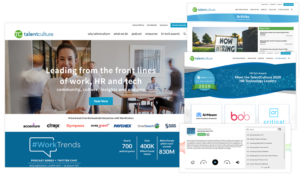
Workhuman Live 2025: Here’s What I’m Looking Forward To
I’m always excited about live events. There’s something irreplaceable about people coming together to celebrate, to bond, to experience. The sense of community is priceless

I’m always excited about live events. There’s something irreplaceable about people coming together to celebrate, to bond, to experience. The sense of community is priceless

Remember the olden days when potential candidates applied to a handful of jobs online and waited for a response? Remember in the stone ages when

The pandemic has brought significant physical and mental health concerns to people around the world. With business closings, reductions in force, and forced isolation for

Those responsible for human resources management have always found themselves in a precarious position. After all, HR pros often deal with a trust deficit on

Figuratively speaking, the number of articles dedicated to discussing the COVID-caused childcare crisis could fill a school library. But little has been written regarding the

2020 has changed the workplace – possibly forever. Which makes it even more important to look at the 2021 HR landscape now. Over the last

If we’ve learned anything over the past decade, it is the power of a hashtag… #WorkTrends has been on quite an adventure. Over the past

In an outlook where the future looks bleak, only true leaders guide their team through the storm and come out stronger on the other side.

Many companies and job titles will go through drastic changes due to the ongoing COVID-19 pandemic. The HR sector and the people working in it

A large component of any work culture is how managers assess and review employee performance and chart progress. Given the remote and hybrid nature of

We’re thrilled to announce that our newly revamped website is now live! In keeping with our mission, it offers the insights that empower HR, the

As some states ease lockdown restrictions and America begins to return to work, some businesses eager to reopen their doors facing a whole new headache:

Over the last few months, there’s been a lot of talk about the current situation of forced remote work and its impact on employee collaboration,

The impacts of COVID-19 and the measures governments and organizations are taking to contain it right now are unprecedented. The hourly breaking news headlines of

Working from home is a necessity for many of us right now. It’s a critical way to help flatten the curve, for one. It can

It seems like the world is constantly changing day to day as we learn more about the global pandemic we’re facing with COVID-19. None of